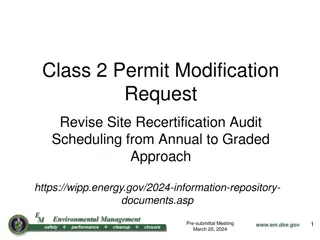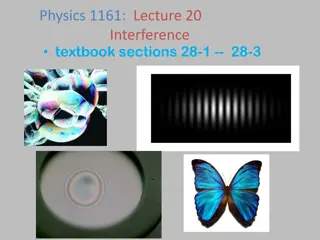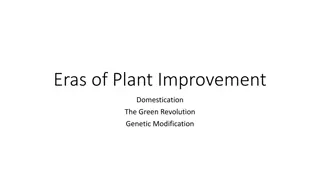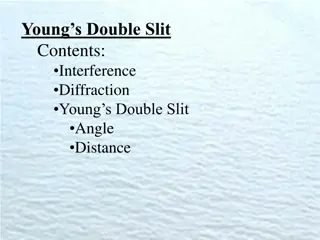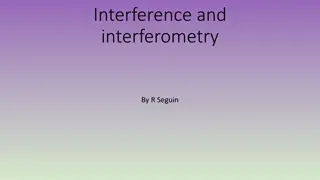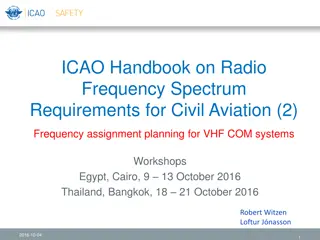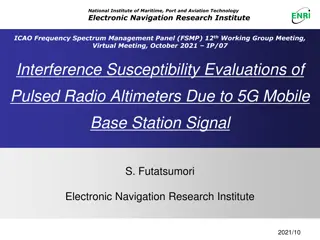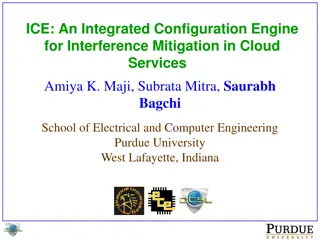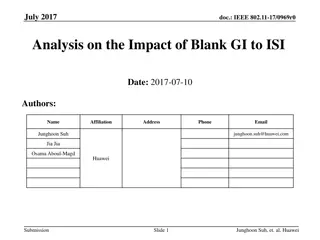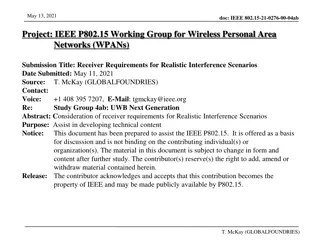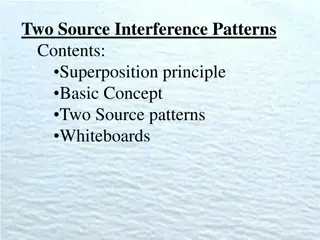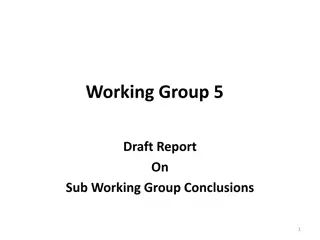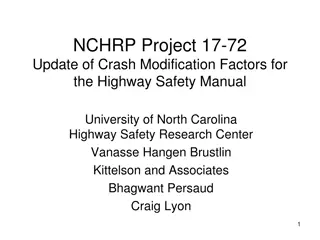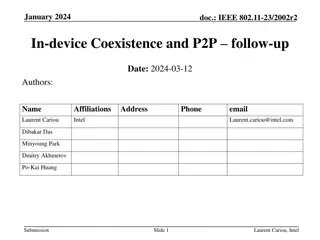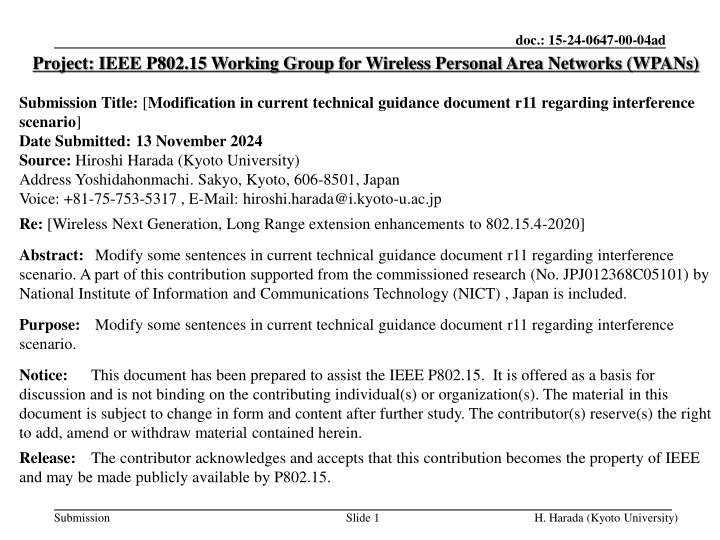
Modification in Technical Guidance Document R11 for Interference Scenario
Explore the modifications made by Hiroshi Harada from Kyoto University in the current technical guidance document R11 related to interference scenarios in wireless personal area networks (WPANs). The document addresses parameters for computer simulations and items to be evaluated for the 802.15.4ad PHY, focusing on clarifying simulation parameters and evaluation criteria. Specific changes include adjustments to interference model details and frequency allocation guidelines for interfering signals with varying bandwidths.
Download Presentation

Please find below an Image/Link to download the presentation.
The content on the website is provided AS IS for your information and personal use only. It may not be sold, licensed, or shared on other websites without obtaining consent from the author. If you encounter any issues during the download, it is possible that the publisher has removed the file from their server.
You are allowed to download the files provided on this website for personal or commercial use, subject to the condition that they are used lawfully. All files are the property of their respective owners.
The content on the website is provided AS IS for your information and personal use only. It may not be sold, licensed, or shared on other websites without obtaining consent from the author.
E N D
Presentation Transcript
doc.: 15-24-0647-00-04ad Project: IEEE P802.15 Working Group for Wireless Personal Area Networks (WPANs) Submission Title: [Modification in current technical guidance document r11 regarding interference scenario] Date Submitted: 13 November 2024 Source: Hiroshi Harada (Kyoto University) Address Yoshidahonmachi. Sakyo, Kyoto, 606-8501, Japan Voice: +81-75-753-5317 , E-Mail: hiroshi.harada@i.kyoto-u.ac.jp Re: [Wireless Next Generation, Long Range extension enhancements to 802.15.4-2020] Abstract: Modify some sentences in current technical guidance document r11 regarding interference scenario. A part of this contribution supported from the commissioned research (No. JPJ012368C05101) by National Institute of Information and Communications Technology (NICT) , Japan is included. Purpose: Modify some sentences in current technical guidance document r11 regarding interference scenario. Notice: discussion and is not binding on the contributing individual(s) or organization(s). The material in this document is subject to change in form and content after further study. The contributor(s) reserve(s) the right to add, amend or withdraw material contained herein. Release: The contributor acknowledges and accepts that this contribution becomes the property of IEEE and may be made publicly available by P802.15. This document has been prepared to assist the IEEE P802.15. It is offered as a basis for Submission Slide 1 H. Harada (Kyoto University)
Nov. 2024 doc.: 15-24-0647-00-04ad Modification in current technical guidance document r11 regarding interference scenario Nov. 13, 2024 Hiroshi Harada, Ph.D. Submission Slide 2 H. Harada (Kyoto University)
Nov. 2024 doc.: 15-24-0647-00-04ad Background In the 802.15.4ad TG, the propagation channel and interference model for computer simulations have been discussed and summarized, but the evaluation items and simulation parameters have not been clarified. This contribution document clarifies parameters used for the computer simulations and items that should be evaluated by computer simulation by the proposer of the 802.15.4ad PHY Submission Slide 3 H. Harada (Kyoto University)
Nov. 2024 doc.: 15-24-0647-00-04ad Modification part in current technical guidance document r11 The author requests to remove some sentences in Page 8. If the bandwidth of the interferer is smaller than the bandwidth of the payload packet, the The frequency of the interferer shall be randomly chosen within the 3dB bandwidth of the packet, with identical distribution within 3dB-bandwidth of the packet. A new frequency shall be chosen for each new packet. If the bandwidth of the interferer exceeds the bandwidth of the packet, the bandwidth of the interferer shall be given by only within the the bandwidth of the packet. Submission Slide 4 H. Harada (Kyoto University)

